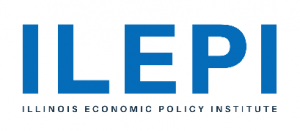
Study: Completing O’Hare Modernization Could Grow Economy Nearly $20 Billion and Create Almost 100K Job
Efforts to Scale Back Project Could Reduce Long-Term Economic Benefits to Chicago Metro Region and Illinois
LA GRANGE, IL, UNITED STATES, May 2, 2024 /EINPresswire.com/ -- As the City of Chicago and partner airlines negotiate over the future of the O’Hare 21 modernization program, a new report by the nonpartisan Illinois Economic Policy Institute (ILEPI) shows that proceeding as planned would create nearly 100,000 jobs by 2033 (or almost 10,000 jobs per year) and generate more than $2 in economic return for every dollar invested. Additionally, the report finds that once completed, the program would boost revenues at Chicago O’Hare International Airport by $280 million per year, grow the Chicago metropolitan economy by more than $500 million annually, and increase state and local tax collections by more than $60 million per year.Read the report, Cleared for Takeoff: The Economic Impacts of Completing the O’Hare 21 Modernization Program.
Originally projected to be an $8.5 billion program, the O’Hare 21 modernization was undertaken through an agreement between the City of Chicago and its signature airlines in 2018. Key elements include a new Global Terminal and multiple concourse expansions to increase gate capacity by 25%, upgraded runways and baggage systems, improved pedestrian tunnels, and a variety of related transit improvements, concession upgrades, and on-property hotel developments. The project has also been supported by the Illinois Department of Transportation’s (IDOT) $900 million I-190 project, designed to improve traffic flow around the facility.
One-third of both the O’Hare 21 and I-190 projects have been completed to date. However, some airlines had recently expressed a desire to scale back the project, citing rising costs linked to inflation, supply-chain disruptions, and COVID-related reductions in passenger travel. The report notes, however, that many of the project components that have already been completed—including runway improvements and a major concourse extension—disproportionately benefit these airlines, while remaining project elements would more directly impact other airlines and the broader Chicago metropolitan region.
For this study, ILEPI compiled data from the City of Chicago’s Terminal Area Plan (TAP), Chicago Department of Aviation, annual financial reports for O’Hare International Airport, and the Chicago Metropolitan Agency for Planning’s (CMAP) Transportation Improvement Program (TIP). It used industry-standard IMPLAN economic modeling software to assess the economic and fiscal impacts of completing the remaining projects by 2033, as well as the longer-term impacts following project completion.
“As North America’s leading airport by cargo value and the nation’s leading airport in terms of passenger flights to destinations, O’Hare is arguably the most important economic asset in Illinois,” said ILEPI Economist and study author Frank Manzo IV, MPP. “While the pandemic and its aftermath have impacted initial cost and timeline estimates of this project, the data reveals that completing each of O’Hare’s planned infrastructure improvements will deliver the best possible return on investment for all stakeholders—including passengers, taxpayers, and the region’s economy.”
The analysis found that, after runway and terminal improvements were completed following the start of construction in 2019, O’Hare has experienced a more than 2% improvement in on-time flight share, even as the share of on-time flights had declined at both Midway International Airport and other major airports across the country over the same time period.
According to IDOT and the Chicago Department of Aviation, the remaining elements to be completed as part of the O’Hare 21 and I-190 projects total over $8 billion in 2024 dollars.
“More than $8 billion in capital improvements and enhanced capacity to serve more people translate into jobs, increased consumer spending rippling across the economy, and higher state and local tax collections,” Manzo added. “The construction phase of completing these projects as planned will create 95,000 jobs, grow the economy by more than $18 billion, and generate more than $800 million in state and local tax revenues by 2033.”
Beyond the near-term economic impacts of creating thousands of jobs per year, the report notes that the project would continue to deliver for the region’s economy well after project completion, due to expanded airport capacity and increased demand from passengers. The Federal Aviation Administration (FAA) has projected that O’Hare will see a 20 percent growth in enplaned passengers by the end of the decade. Based on O’Hare’s 2022 financial statements, that would equate to a $280 million annualized increase in operating revenues.
“This analysis shows that more capacity and more consumer demand will mean hundreds of new permanent jobs both at the airport and beyond—including baggage handlers, flight attendants, pilots, TSA agents, and airport service providers as well as at local businesses where these workers spend money as consumers across all sectors in the Chicago metropolitan area,” Manzo said.
“Once completed, the O’Hare 21 modernization program will deliver a first-class airport and produce historic economic value for passengers, workers, taxpayers, and the economy as a whole,” Manzo concluded. “Scaling back or delaying work would not only harm the region’s economy by reducing these impacts, it would jeopardize O’Hare’s status as the most connected airport in the world.”
#####
The Illinois Economic Policy Institute (ILEPI) is a nonpartisan nonprofit research organization which uses advanced statistics and the latest forecasting models to promote thoughtful economic growth for businesses and working families in Illinois and across the Midwest.
Todd Stenhouse
Illinois Economic Policy Institute
+1 916-397-1131
toddstenhouse@gmail.com
EIN Presswire does not exercise editorial control over third-party content provided, uploaded, published, or distributed by users of EIN Presswire. We are a distributor, not a publisher, of 3rd party content. Such content may contain the views, opinions, statements, offers, and other material of the respective users, suppliers, participants, or authors.




